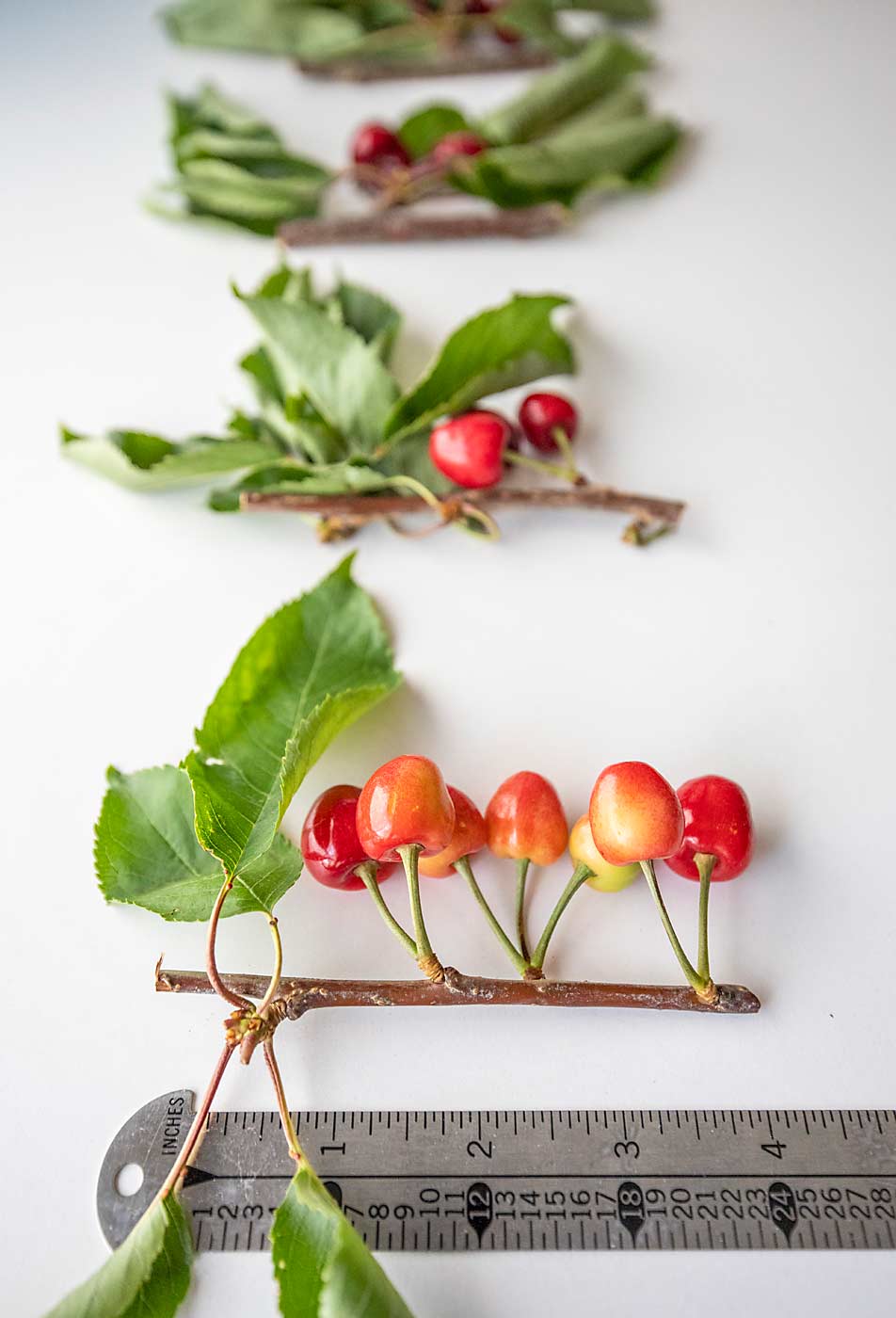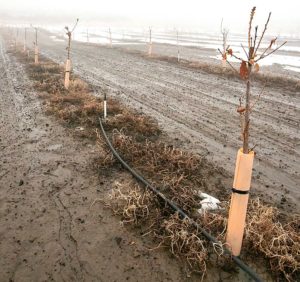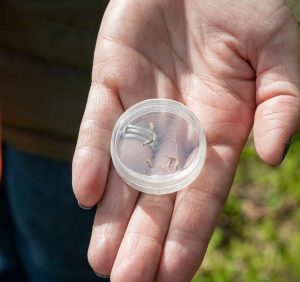
Scout, test and remove.
That’s the message Washington State University research and extension centers promote to encourage an aggressive response to the pathogens that cause what’s commonly known as little cherry disease. Experts shared some of the latest findings and best practices for those steps during the Cherry Institute in January and the Washington State Tree Fruit Association’s annual meeting in December.
Two pathogens, the little cherry virus and the X phytoplasma, can both cause infected cherry trees to produce small, pale distasteful fruit. In the past year or two, it’s become clear that X disease poses the biggest threat to Northwest cherry growers right now, and more research and extension efforts are focusing on it specifically, said Scott Harper, a Washington State University virologist and X disease researcher.
Scouting for the symptoms must be a priority during the busy window just before harvest, he said.
“The challenge is the symptoms can be missed as unripe fruit until closer to harvest,” Harper said. “People don’t think of it as a disease, they just think the fruit is not ripening.”
Symptom presentation can also vary across cultivars and severity of the infection, becoming more pronounced with time. He recommends using cultivar-specific symptom guides now available, along with many other X disease and little cherry disease resources, on WSU Tree Fruit Extension’s website: treefruit.wsu.edu/crop-protection/disease-management/western-x/sampling-guide.
When symptoms are first detected, collect samples for testing, including cuttings with fruit stems and leaves from diseased limbs. The X phytoplasma can be difficult to test for, but fruit stems seem to be the most reliable tissue, Harper said in a follow-up interview.
As testing was rolled out to commercial labs last year, there were some frustrations, but this season should go smoother, Harper said. His lab at the Clean Plant Center Northwest has been working with the commercial labs to conduct proficiency tests this winter, to troubleshoot the process and prepare to provide growers more consistent, timely results.
When the results are in, infected trees should be removed as soon as possible, because feeding leafhoppers can spread the infection, said extension specialist Tianna DuPont.
“If this is a block that has a history of X or little cherry disease, and you find symptomatic trees, they can just be removed,” she said. “If you’ve had it in the block and symptoms are clear, immediate tree removal is going to get it out of the block before more pathogen can get moved around.”
As for the best way to remove trees, there have been questions about the role of root grafting, DuPont said. She shared the results from trials designed to look at managing those risks, through herbicide application to show if you need to remove adjoining trees. The trial compared the results of applying glyphosate to freshly cut stumps or using the frill method, in which the herbicide is applied to notches or drilled holes in the trunk while the tree is still alive.
“We’re seeing that the August and May timing (both) seem to do well for root death, and frill application is overall better than cut stump application,” DuPont said, although the stump application also worked.
In older blocks on traditional rootstocks prone to root grafting, it’s important to use one of the methods, she said. But in smaller rootstocks such as the Gisela rootstocks, “we don’t see as much herbicide moving, indicating that we have less of a problem with root grafting,” DuPont said.
During the question-and-answer portion of the Cherry Institute session, DuPont and Harper were asked about considerations for when and how to replant. They recommended waiting at least a year for roots to die, but after that, it comes down to each farm’s comfort with risk management.
“The concern is not so much, do you still have roots viable in the ground, but do you have disease pressure in the area,” Harper said, adding that disease pressure is now widespread in many cherry-growing areas. “But as we get better about our vector management, you might feel better” about replanting in the next few years.
In a follow-up interview, DuPont said the aggressive response she is seeing on tree removal should reduce disease pressure in coming years, but “we’re not there yet.”
Harper said growers who want to replant should consider the management strategies necessary to protect the investment in new plantings. Growers should test nonbearing orchards as well, he said, although he doesn’t yet have a recommendation on how much testing would be required to have a high chance of catching infection early.
When asked what else the cherry industry needs to know about the X disease epidemic going into 2021, Harper said: “It’s certainly not getting any better. They can’t relax.”
—by Kate Prengaman








Leave A Comment